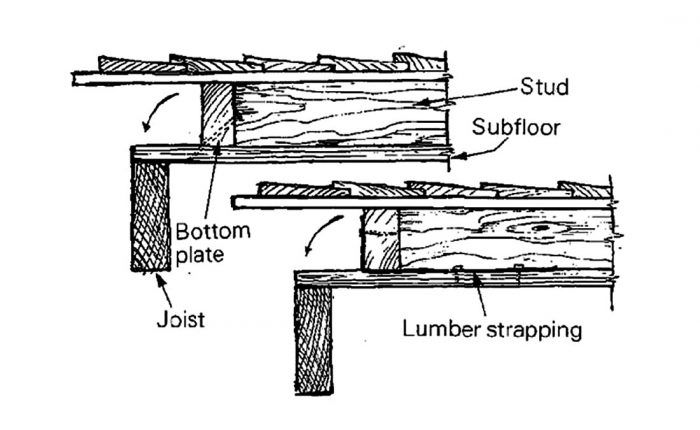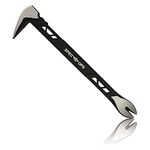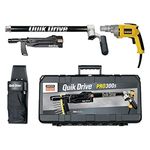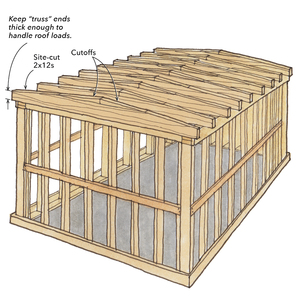
The easiest way to keep the bottom plate of a framed wall from walking when it is being raised is to toenail it into the subfloor. The nails bend easily as you lift the wall, and the bottom plate usually remains in the immediate neighborhood of its intended layout.
A more secure system uses the strapping that binds lumber loads. Cut it into 12-in. pieces and nail one end to the underside of the bottom plate. The other end should run under the wall and be nailed into the subfloor. Concrete nails will pierce the stuff, or you can abuse your 2/32 nail set and start a hole. The strapping can be left in place and covered by the finish flooring.
—M.F. Marti, Monroe, OR
Edited and illustrated by Charles Miller
From Fine Homebuilding #8
Fine Homebuilding Recommended Products
Fine Homebuilding receives a commission for items purchased through links on this site, including Amazon Associates and other affiliate advertising programs.

Protective Eyewear

11" Nail Puller

QuikDrive PRO300s






























View Comments
FH, please start phasing out these amateurish, ancient line drawings in these tips. They're awful.
I'm pretty ancient too, but I like the drawings. They help me understand the instructions, and feel like something an actual carpenter might sketch out on a lunch bag or scrap of plywood.
"Ancient" drawings for ancient tips: May 1982. But, still relevant, useful, and clever. :-)
Most product assembly instructions and repair/operating manuals use line drawings. There are good reasons for this - one being that it's real hard to take a photograph of a section through a solid material. There are cases where a photo is appropriate and should be used, but never exclusively. The gripe I have with FH tips is that some go way out into fantasy land - like the one where the guy sprays off a paint roller and somehow manages to not spray himself. (Which incidentally works. I once built a clumsy shield contraption to keep myself from getting a water-paint shower and collected the water in a wheel barrow.)
FH, please keep these wonderful, precise line drawings, obviously done by a real person and not a computer. They're perfect!
If it wasn't for the line drawings I wouldn't be able to understand the text descriptions. Photos would have too much detail. Keep up the good work.
Btw, spray off a paint roller in a 5 gal. bucket.
I told y'all how to do this once before; it's easy.